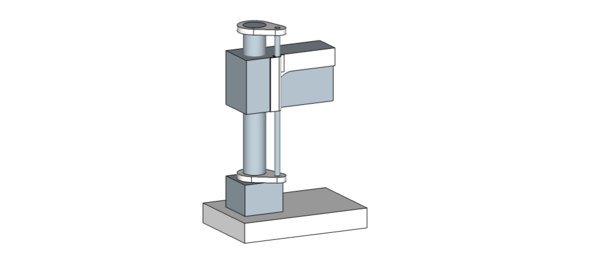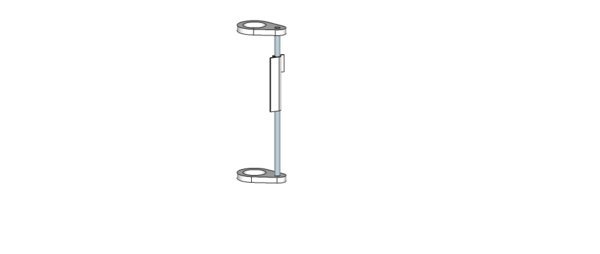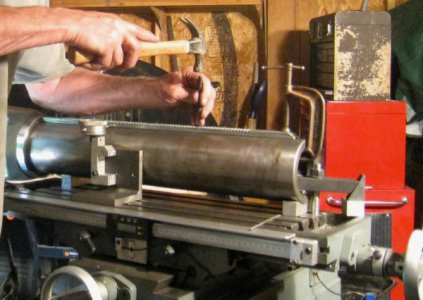- Joined
- Jan 1, 2014
- Messages
- 233
Two years ago I posted a thread on keeping the X on my King PDM30 by fixing the rack to the column, and attaching two tight fitting guide blocks on the head. I was getting .001" repeatability. As a method of checking I set a 1-2-3 block in the vise, edge found the X and Y, set both the DRO and lead screw dials to zero, moved the head, edge found again seeing both the lead screws and DRO rereading zero.
I recently watched a You Tube video by Cuppa Joe (Wrong Fu II) in which he used a linear brg and shaft, plates clamped to the top and bottom of the column (8.5" column C/L to shaft C/L), and replacing the hood with a 3/8" flat plate to anchor the brg relative to the head. As a check of the resulting accuracy, he set DI against the extended quill and moved the head up and down. His results were impressive to > .001". Moreover, because of the sturdy design, the head doesn't wiggle when being moved.
Today I decided to re-test my mill the same way as Cuppa Joe did and have attached a video to show the results. I know the distance between the guide blocks and the column C/L vs the distance between the column C/L and the quill C/L is not ideal for control, but it seems to work well enough. Cuppa Joe's mill has a split head casting and two clamping bolts, as mine does, but in his case, it doesn't seem to matter how you retighten the bolts. On mine it does, the top one has to be tightened first. In the video you can see how much the head comes adrift after unclamping and if you don't fully retighten the top bolt first it will be off, as it was in one case in the video. Just the interaction between the rack and the split head as it comes back together I believe.
Anyways, it was a bit of relief to see that the setup is still accurate.
Canuck75
I recently watched a You Tube video by Cuppa Joe (Wrong Fu II) in which he used a linear brg and shaft, plates clamped to the top and bottom of the column (8.5" column C/L to shaft C/L), and replacing the hood with a 3/8" flat plate to anchor the brg relative to the head. As a check of the resulting accuracy, he set DI against the extended quill and moved the head up and down. His results were impressive to > .001". Moreover, because of the sturdy design, the head doesn't wiggle when being moved.
Today I decided to re-test my mill the same way as Cuppa Joe did and have attached a video to show the results. I know the distance between the guide blocks and the column C/L vs the distance between the column C/L and the quill C/L is not ideal for control, but it seems to work well enough. Cuppa Joe's mill has a split head casting and two clamping bolts, as mine does, but in his case, it doesn't seem to matter how you retighten the bolts. On mine it does, the top one has to be tightened first. In the video you can see how much the head comes adrift after unclamping and if you don't fully retighten the top bolt first it will be off, as it was in one case in the video. Just the interaction between the rack and the split head as it comes back together I believe.
Anyways, it was a bit of relief to see that the setup is still accurate.
Canuck75


 You still have to dial in the last few thousandths. Consider the distance from the column to the spindle, a very small amount relative movement at the column translates into a large movement at the spindle.
You still have to dial in the last few thousandths. Consider the distance from the column to the spindle, a very small amount relative movement at the column translates into a large movement at the spindle.


